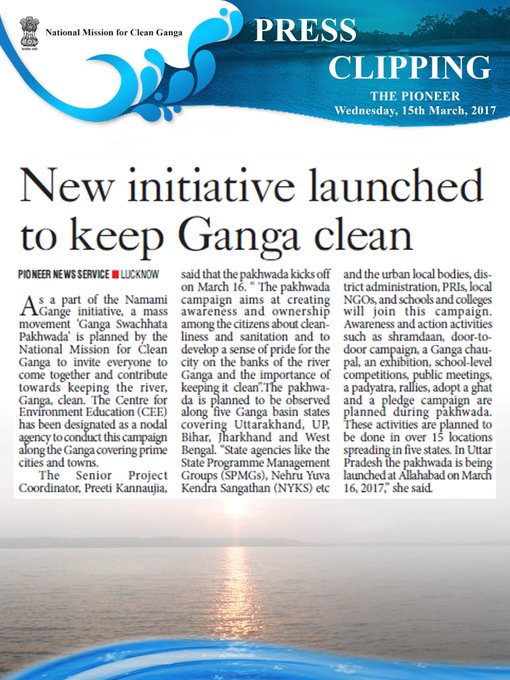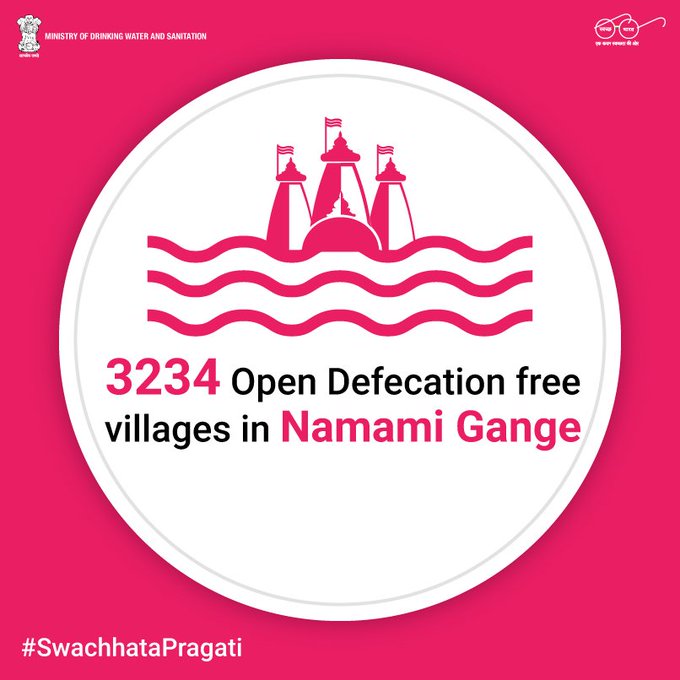It is India’s lifeline, cutting across 5 states and providing water to 40% of India’s population across 11 states, but the Ganga is in distress. For centuries it has been revered and worshipped but today it is among the most polluted rivers in the world, full of waste from industries, religious offerings to cremation activities. In 2014, the government launched the ₹20,000 crore Namami Gange project to clean and beautify the Ganga.
Within the first month of the project, 704 industries were examined by the National Ganga River Basin Authority and out of those, forty eight industries were asked to shut down.
In 2014, various river surfaces faced a rise in pollution levels due to lack of waste disposal techniques. It was then, that the Namami Gange project began the cleanliness work in 5 locations- Varanasi, Kanpur, Allahabad, Mathura and Patna.
The Great Ganga Cleanup: A Timeline
It is India’s lifeline, cutting across 5 states and providing water to 40% of India’s population across 11 states, but the Ganga is in distress. For centuries it has been revered and worshipped but today it is among the most polluted rivers in the world, full of waste from industries, religious offerings to cremation activities. In 2014, the government launched the ₹20,000 crore Namami Gange project to clean and beautify the Ganga.
Within the first month of the project, 704 industries were examined by the National Ganga River Basin Authority and out of those, forty eight industries were asked to shut down.
In 2014, various river surfaces faced a rise in pollution levels due to lack of waste disposal techniques. It was then, that the Namami Gange project began the cleanliness work in 5 locations- Varanasi, Kanpur, Allahabad, Mathura and Patna.
The Great Ganga Cleanup: A Timeline
- May 2015 | Centre allocates ₹20,000-Crore for the next five years. It also introduces a three-tier mechanism to improve implementation of this flagship initiative.
Read: http://www.ndtv.com/india-news/centre-okays-rs-20-000-crore-budget-for-namami-ganga-scheme-762770 - November 2015 | River Ganga to be one of the cleanest rivers by October 2018 assures Union Water Resources Minister Uma Bharti.
Read: http://www.ndtv.com/india-news/ganga-to-be-one-of-the-cleanest-river-by-october-2018-uma-bharti-1244165 - January 2016 | The Central Government launches the Ganga Task Force Battalion deployed at Garhmukteshwar to ensure that citizens do not pollute the river.
- July 2016 | In presence of Union Ministers Nitin Gadkari and Narendra Singh Tomar, Water Resources Minister, Uma Bharti launches the ‘Namami Gange’ initiative with 300 projects in more than 103 locations in five basin states of river Ganga.
Read: Namami Gange Projects Worth Rs. 250 Crore Launched In Uttrakhand - September 2016 | Parameswaran Iyer, Secretary of Drinking Water and Sanitation Ministry assures that all the villages across Ganga will turn Open Defecaton Free by the end of 2016. According to ministry officials, 1300 villages have already gained the ODF status post the clean Ganga initiative.
Read: Villages Along The Ganga To Be Open Defecation Free By December - October 2016 | More than 5000 idols were immersed across Ganga during Durga Puja in Bihar thereby raising the pollutions levels lakes, rivers and ponds. Despite several appeals from Bihar State Pollution Control Board’, people contaminated water with harmful elements such as mercury, zinc oxide, chromium and lead
Read: Immersion Of Idols Increasing Ganga’s Pollution Level In Bihar - October 2016 | National Green Tribunal (NGT) says central and state officials clueless on the amount of waste generated in the Ganga and do not know how many drains are polluting the river.
Read: Authorities Clueless On How Many Drains Carry Sewage Into Ganga: NGT - October 2016 | Uttar Pradesh Pollution Control Board blames residential and commercial building for a poor waste management system. Multi-storied complexes built along the floodplains of Ganga and Yamuna have failed to introduce a mechanism for municipal solid wastes thereby contaminating the rivers.
Read: ‘Encroachments On Floodplains Release Sewage Into Ganga, Yamuna’ - December 2016 | NGT orders Uttar Pradesh authorities to compile industries operating between Haridwar and Unnao. The report must consist of details on quantum and quality of waste being generated into the rivers.
Read: National Green Tribunal Directs UP Authorities To Give Details Of Industry Clusters Near Ganga - December 2016 | In first of its kind decision, the government seeks to introduce a new bill under Ganga Act to punish those found polluting the river.
Read: Government Planning To Penalise Those Found Guilty Of Polluting Ganga - January 2017 | The Supreme Court orders the central government to prepare a fresh report on the status of the ongoing Ganga cleaning programs in the five states through which the river passes.
Read: Update Report On The Status Of Ganga Clean-up: SC To Centre - January 2017 | The Union Water Resources Ministry announces deploys 20,000 youth known as ‘Swachhta Doots’ in Uttarakhand, Uttar Pradesh, Bihar and West Bengal to spread the cleanliness message. The Rs. 10 crore project aims to train the youth to motivate people to refrain from polluting the Ganga.
Read: 20,000 Youths To Be Trained And Deployed As ‘Swachhta Doots’ January 2017 | Corporate India joins the ‘Namami Gange’ project as part of their CSR activities.
Read: Government Seeks Corporate Assistance To Clean Ganga- January 2017 | Corporate India joins the ‘Namami Gange’ project as part of their CSR activities.
Read: Government Seeks Corporate Assistance To Clean Ganga - February 2017 | NGT questions the government agencies on execution of the Rs. 20,000 crore ‘Namami Gange’ project. The tribunal says that public money is being misused in the name of cleaning the Ganga.
Read: Public Money Wasted, Not A Drop Of Ganga Cleaned: National Green Tribunal - February 2017 | NGT questions the government agencies on execution of the Rs. 20,000 crore ‘Namami Gange’ project. The tribunal says that public money is being misused in the name of cleaning the Ganga.
Read: Public Money Wasted, Not A Drop Of Ganga Cleaned: National Green Tribunal - February 2017 | Copper and chromium level rises in several tributaries of Ganga due to illegal processing of electronic waste. National Green Tribunal orders an investigation over dumping and burning of e-waste.
Read: Is Electronic Waste Being Dumped Along The Ganga? NGT Orders Probe - March 2017 | Under the ‘Namami Gange’ project, the government allots an additional Rs. 1050 crores to build sewage treatment systems. Two Sewage Treatment Plants (STPs) to be constructed in Patna to ensure timely waste disposal.
Read: Projects Worth Rs. 1,050 Crore Announced To Clean Ganga - March 2017 | National Mission for Clean Ganga launches a mass movement ‘Ganga Swachhata Pakhwada to create awareness and a sense of ownership among the people living along the banks of River Ganga about cleanliness and sanitation.New initiative launched to keep Ganga clean. #NamamiGange
- March 2017 | Government declares 3234 villages Open Defecation Free under the Namami Gange.3234 villages have been declared #ODF under the Namami Gange initiative which aims to provide a clean environment. #SwachhataPragati
- 2017 | In a landmark judgement, Uttarakhand High Court grants a legal human status to River Ganga and Yamuna.
Read: http://swachhindia.ndtv.com/ganga-yamuna-living-human-entities-hc-5650/





